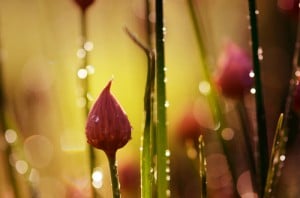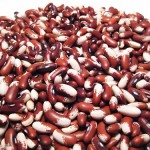 Fresh produce from the garden is one of the simplest delights of summer. What’s not to like about plucking off and biting into a tomato, cucumber, or sugar snap peas still warm from the sun.
Fresh produce from the garden is one of the simplest delights of summer. What’s not to like about plucking off and biting into a tomato, cucumber, or sugar snap peas still warm from the sun.
Many of us do not have a yard large enough for a vegetable patch or time to volunteer at a community garden, but we still want home grown foods — and maybe more than enough to share. There is a solution to growing your own veggies in a way that works with your small yard and requires only a little additional time from a busy schedule — edible landscaping.
This concept has been around for decades and is a common gardening practice in Europe where personal yard space is very limited. Here is how you can do the same thing in a manner sensitive to the landscape you already have. Substitute vegetable plants for annual flowers.
Let’s start with some basic rules:
- Using any products for pest and disease control must be compatible with food consumption, with organic methods being preferred.
- Locate vegetable plants so that pets cannot taint or damage them.
- Do not plant edibles near treated lumber such as decks or retaining walls. Leaching of preservative chemicals from the lumber contaminates food.
- Locate plants where they will receive good air movement and at least six hours of direct sunlight on their leaves.
Tomatoes are the number one home grown vegetable. Use disease resistant varieties rather than heirlooms in a mixed bed. Sweet 100’s are indeterminate (bearing fruit all season) and are excellent for trailing. Varieties bearing smaller fruit of 10 oz. or less, that are determinate (producing all at once) can be added singly throughout the landscape and usually do not need additional support. To prevent having a big empty spot in your landscape, avoid planting tomatoes in groups; they die out in late summer when blights are prominent.
A sturdy trellis that grew annual flowering vines can be used for growing edibles. Cucumbers can grow on a trellis, or allowed to cascade over a wall. Green beans that vine can also be grown on a vertical support. With green beans, plant them in succession, reseeding every two weeks, to enjoy them throughout the summer.
For dramatic leaves grow Swiss chard ‘Bright Lights’, beets, rhubarb, summer squashes, or cardoon. Lettuces and kale are also good for adding texture to the landscape. Flowering kale is pretty but not very tasty — really, its just ornamental. Choose instead Winterbor or Redbor kale, Russian varieties such as blue-curled Vates, or heirloom Italian variety Lacinato. I personally love the flavor and diversity of eggplant in recipes. It is also very handsome in the landscape when planted with smaller textured flowers or herbs.
Herbs are wonderful for adding interest. Herbs do best in a hotter location with well drained soil, and require very little fertilization. Dill with its long stalks of delicate narrow leaves attracts pollinators when in flower. Big leaf basil is a favorite of many gardeners, so plant several of them to have enough for pesto or just a few for seasoning or adding to soups. I love cilantro but it dies out quickly so I usually replant seeds every other week. My favorite herb in the edible landscape is parsley because of its lovely curly leaves and mounded form, and because I eat a lot of tabouli! Don’t forget the chives but be sure to remove spent flowers before they go to seed.
If you do not have a yard, growing vegetables in larger containers works well. Don’t limit yourself to plopping one tomato plant in the center. Add herbs around the edges, or grow uprights in the middle and Sweet 100 tomatoes cascading over the side. An excellent book The Bountiful Container offers a lot of really good information on this type of gardening.
With a little planning and a minimal amount of additional time, your landscape can become a source for fresh healthy and possibly organic food.
(Image “Chives and Dew” by Jitka Volfova, shutterstock .com)

















